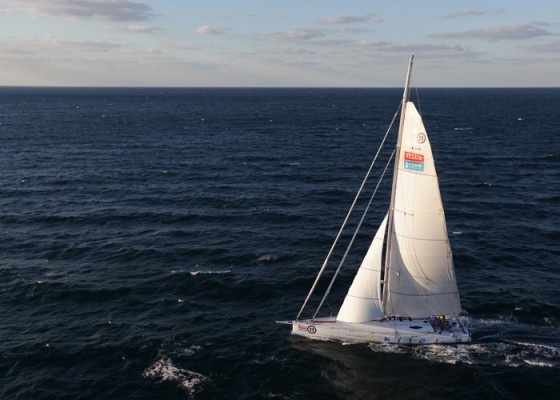It's Cape Town to Wellington. Competitors share their thoughts and concerns about the treacherous southern Ocean
If the first ocean sprint from La Rochelle to Cape Town wasn’t hard enough, the Velux 5 Oceans is about to get a lot tougher. Howling winds, freezing temperatures, mountainous seas and icebergs await the five ocean racers as they leave the comfort of Cape Town and head into the bleak expanses of the Indian Ocean bound for Wellington in New Zealand.e skippers and their next port of call.
One man who knows firsthand the dangers and challenges that lie ahead for the ocean racers is Velux 5 Oceans race director David Adams, a veteran of two editions of the race and winner of class two in 1994 event, then known as the BOC Challenge. “Ocean sprint two is probably the most physically demanding,” David explained. “It’s a very tough leg. It’s cold, it’s dark, it’s wet, the sea is a nasty green colour and it is ferocious. For the whole sprint these sailors will be down in the Roaring Forties and the Screaming Fifties.
Skippers share their thoughts and concerns about the treacherous southern Ocean in the next sprint during this small preview of Ocean Sprint 2, Cape Town – Wellington:
After setting sail from Cape Town on 12 December, the fleet of Eco 60s will head further south into the Southern Ocean, characterised by giant depressions capable of delivering hurricane force winds and waves the size of buildings. The constant crashing of the boat means little if any sleep for the skippers, and the violent seas ensure nothing onboard, however well stowed, is left dry.
To minimise the risk of sailing through the most dangerous iceberg-littered section of the Southern Ocean, the fleet must stay north of the Kerguelen Islands, a desolate archipelago midway between South Africa and Australia. But with the reduced danger of ice come more problems.
“It’s not so much the wind that is the problem, it’s the size of the seas,” David said. “If you happen to get to the Kerguelen Islands at the wrong time, when there’s a low pressure system, it’s really nasty. You’ve got this ocean that is up to four miles deep and then you get to the Kerguelen Islands and it goes to 100 metres. The waves just stand up like four or five storey buildings just coming right for you. You just listen to the roar of the waves as they are coming and you just have to work with them.”
After rounding the Kerguelen Islands the racers will then dip south again to pick up the strongest winds to power them to Wellington.
Another safety gate below Cape Leeuwin, the most south-westerly point of Australia and the second of the Great Capes, will keep the fleet out of yet more danger from icebergs. A timed run between longitudes 50 East and 75 East will test the skippers’ speed and provide an opportunity to win bonus points.
Just when the skippers are within touching distance of Wellington and the finish line they will be faced with Cook Strait, the bank of water between the North and South Islands of New Zealand. A natural wind funnel, Cook Straight is prone to localised storms making it a formidable gauntlet for yachts to pass through.
Ocean sprint two starts from Cape Town at 14:00 local time (12:00 UTC) on Sunday 12 December.
For more, visit www.velux5oceans.com
![]() Follow us on twitter.
Follow us on twitter.
Subscribe to Yachting World magazine for all the latest racing news and reviews




